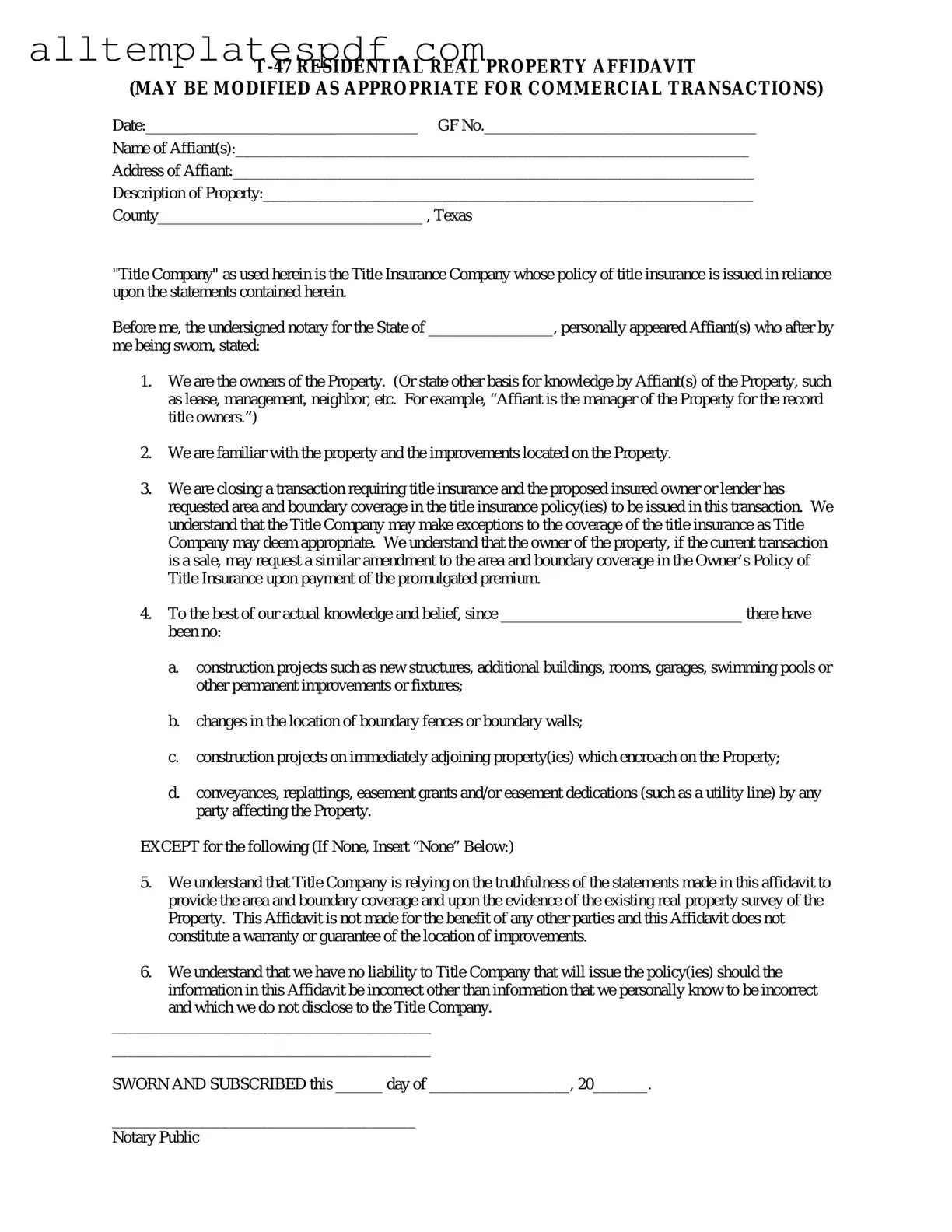Fill Out a Valid Texas residential property affidavit T-47 Form
The Texas residential property affidavit T-47 form is a document used to verify the property ownership and any existing liens or encumbrances on a residential property. This form is essential for buyers and sellers during real estate transactions, ensuring transparency and legal compliance. Understanding its purpose can help streamline the buying or selling process.
To fill out the form, click the button below.
Open Editor
